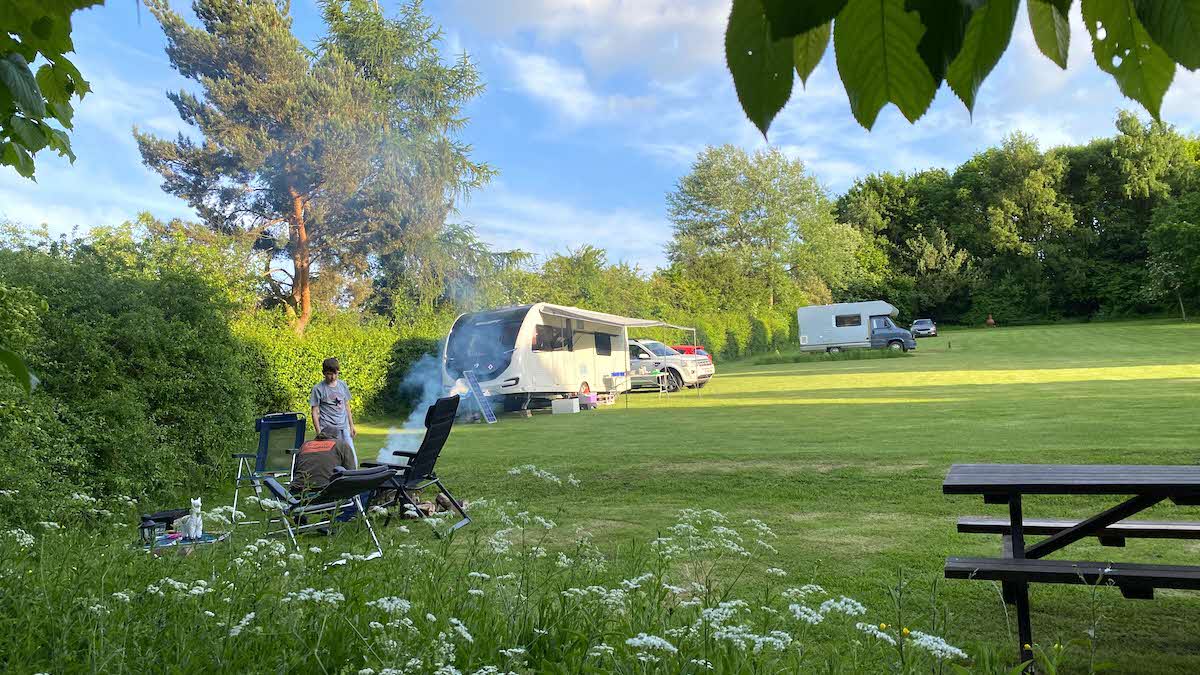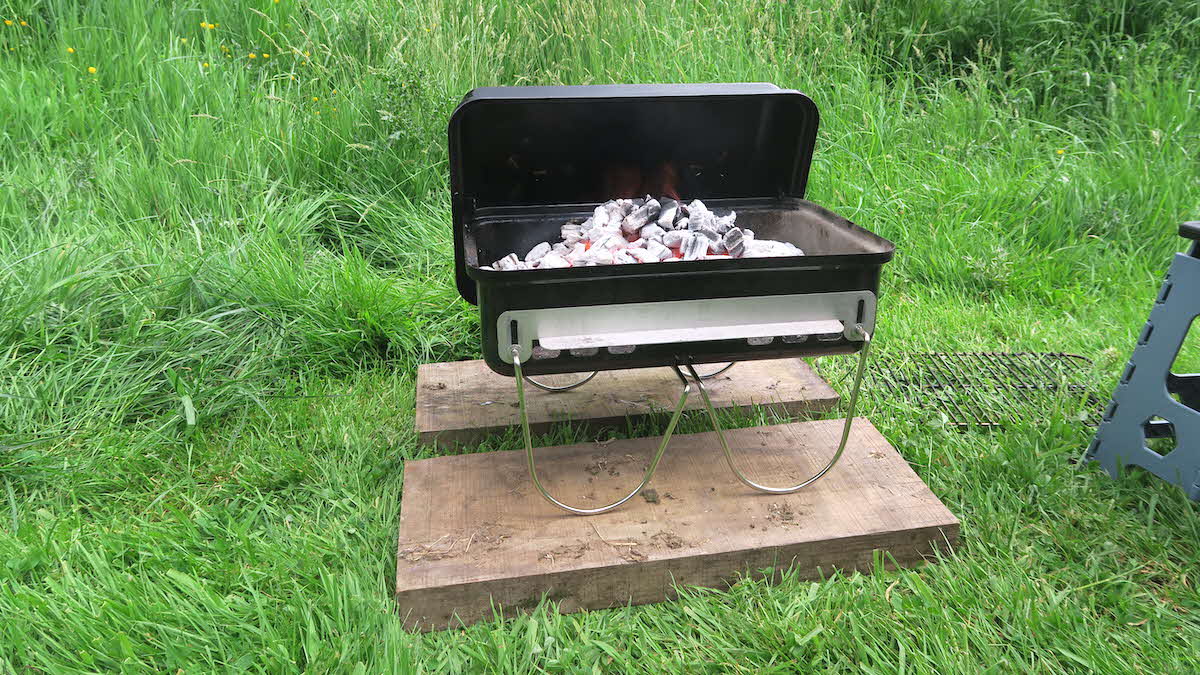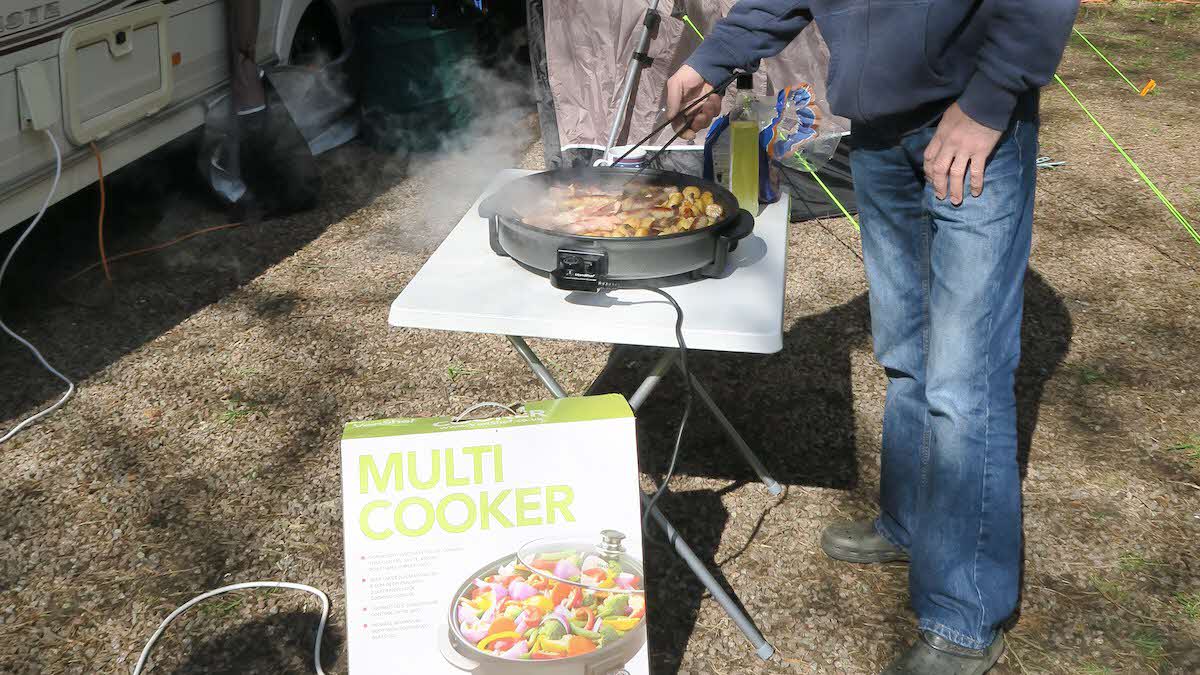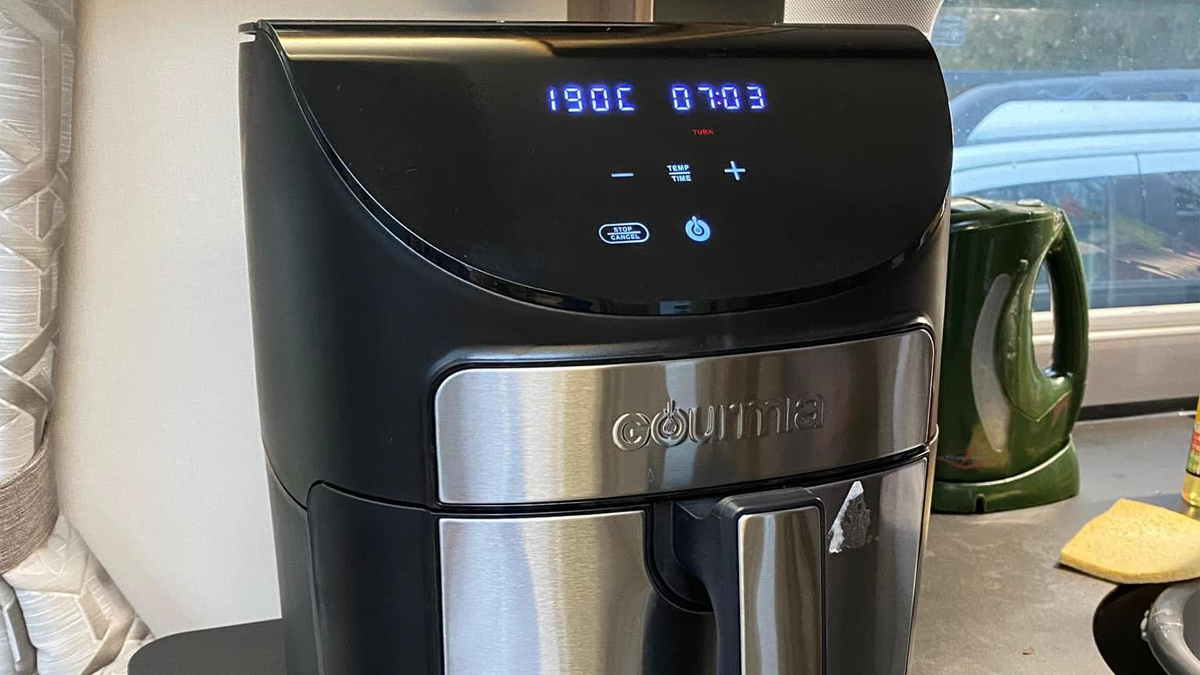Up to 10% off Club Shop
Get up to 10% off all products from our new & improved Club shop
Explore our new shopSammy Faircloth considers alternative outdoor and indoor cooking options

The majority of UK-built leisure vehicle kitchens come fully furnished with an oven, grill, gas hob and microwave – suggesting we Brits are more than happy to rustle up a three-course meal in our caravans and motorhomes. Interestingly, elsewhere on the Continent, many manufacturers opt for a more basic set-up of two or three gas rings and a coffee machine. The latter seems to reflect a cultural inclination away from in-vehicle cooking, perhaps driven by a warmer climate and a preference towards eating al fresco.
That’s not to say we don’t enjoy outdoor cooking in this country when the weather suits (notably, numerous up-market British caravans feature external gas/barbecue points and external 230V sockets) – and in the warmer months, it’s far more enjoyable to prepare meals outdoors than endure the heat inside your leisure vehicle. Let’s look at some alternative outdoor cooking options for chefs who want to experiment – both inside and outside the vehicle.

Barbecuing is almost certainly the most popular method of outdoor cooking. There are typically two options: gas or charcoal. In my opinion, the smoky flavour imparted by a charcoal barbecue enhances the taste of your food. (Remember that charcoal releases dangerous carbon monoxide as it burns – so you should never use it in an enclosed space such as an awning; always ensure you thoroughly extinguish charcoal barbecues before retiring for the night. In fact, all types of barbecue can produce carbon monoxide, but it's a particular risk with charcoal models. Always let any barbecue cool thoroughly before bringing it into a habitation area for storage.)
Charcoal barbecues come in various styles, ranging from disposable models to compact ones such as those made by Weber, which are particularly suited to caravanning or motorhoming thanks to their size and versatility.
Many people prefer to use a gas barbecue, saying they make life easier in terms of temperature control and cleaning. Additionally some campsites may prohibit charcoal fires, so a gas barbecue is a convenient alternative.

Electric woks, hot plates, slow cookers and multi-cookers are great alternatives to barbecues, but only really ideal if you have electric hook-up.
Rectangular Japansese ‘teppanyaki’ grills are popular at the moment. Not only are they lightweight but they can be conveniently stowed in a low locker. We’ve embraced this trend by investing in an extra-large version.
There are many simple Japanese recipes online to try, but teppanyaki grills are also great for cooking multiple pancakes – or even a hearty fried breakfast for the entire family. Be careful where you use a teppanyaki grill – if you cook indoors with it, you don’t want any grease splattering onto your upholstery!

Air fryers are considered healthier than deep fat fryers as they rely on the use of far less oil. In addition they provide a cheaper, more convenient way of cooking than a traditional oven – some motorhome and campervan manufacturers are now including them as standard equipment.
Before plugging in on site, though, it’s crucial to verify the wattage of your air fryer to prevent tripping circuit breakers at the hook-up post (see panel on previous page).
Additionally, ensure there’s at least 10cm/4in of clearance all around the appliance, including above it, and avoid placing it near combustible materials such as curtains.
As with any electrical device, be cautious if using it outdoors (eg avoid rain or putting it on a damp surface) and always read the manufacturer's instructions. Note that there are several models of air fryer specifically designed for outdoor use which are an alternative to a barbecue.
If you’re in need of camping cookery inspiration, look out for talks from renowned chefs at the big caravan, camping and motorhome shows. You could consider investing in a specialist recipe book such as Karen Wright’s Meals on the Move or The Camper Van Cookbook by Martin Dorey.
Be aware of the wattage of your device – you don’t want to trip the circuit breakers on the on-site electric hook-up post.
Typically, most Club sites permit a maximum current of 16A per leisure vehicle. On some sites this can be lower – 10A or even 5A, especially in European locations. Always ask the site staff about the maximum current, to avoid any inconvenience.
To determine the amps used by your appliance, simply divide the wattage by 230V. For example, a standard air fryer with a wattage of 1,500W would consume just over 6.5A, rendering it unsuitable for a 5A hook-up.
You’ll need to consider what other appliances you may be running simultaneously – such as a kettle, lights, or television – as it all adds up.

There’s so much cooking kit to choose from at shop.camc.com, where, as a Club member, you can save 10% on all Cadac portable gas barbecues and cooking accessories. See the website for terms and conditions.